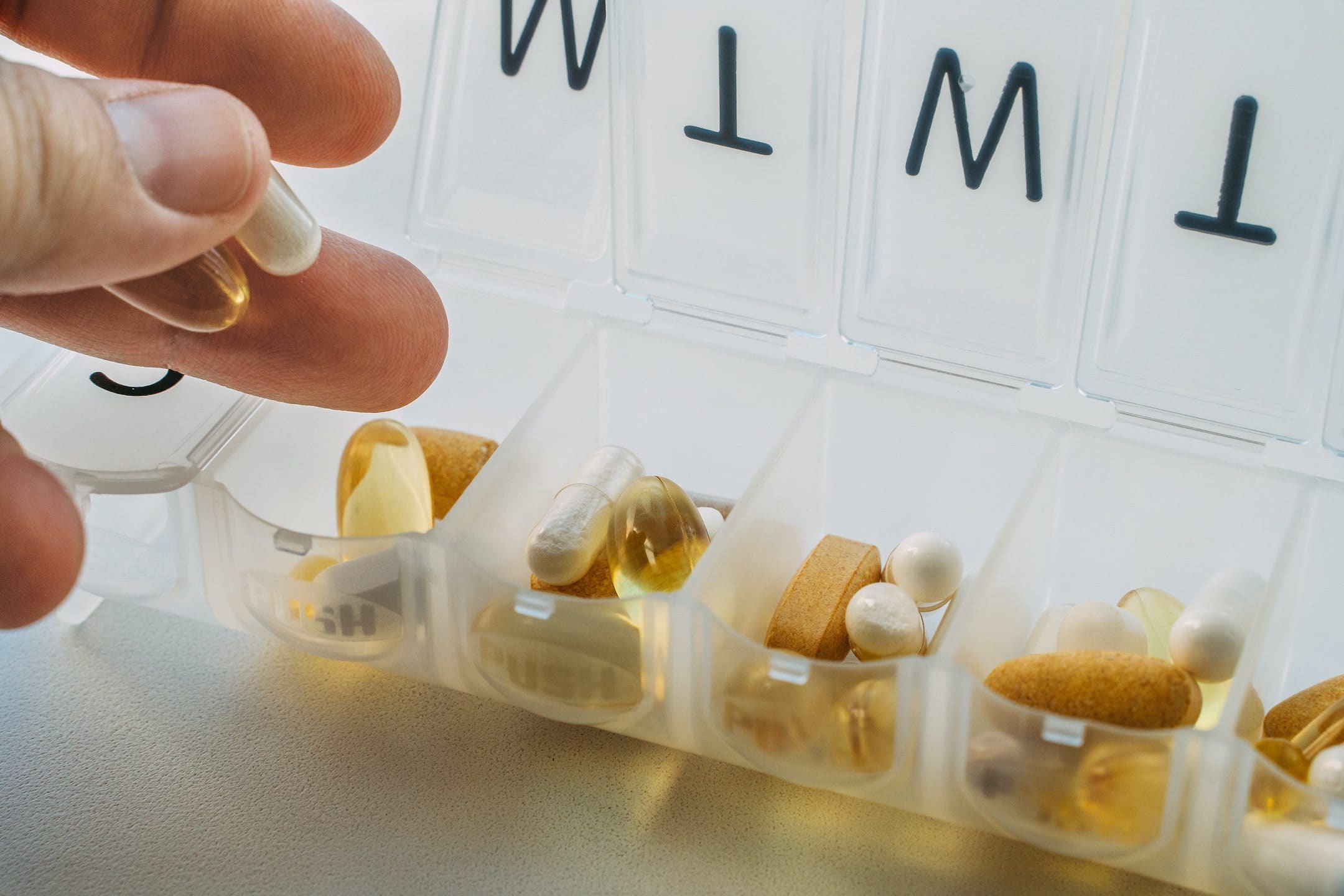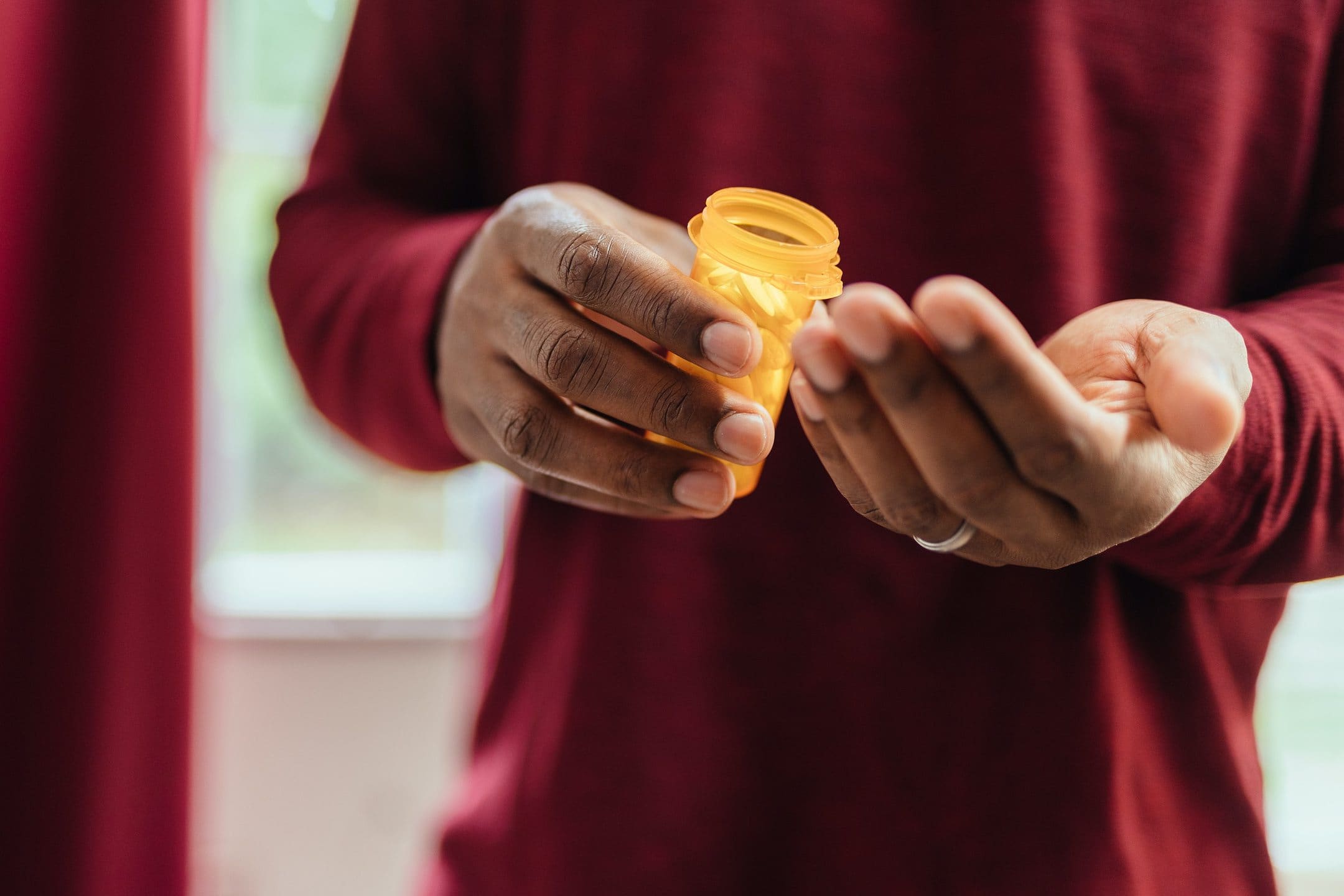Peyronie’s disease, a condition in which scar tissue on the penis can cause it to bend abnormally, affects 1 in 100 people adult males. Though it does not cause male-factor infertility, Peyronie’s disease can prevent you from having sex, make it difficult to get or maintain an erection (erectile dysfunction), or make sex painful. This can have indirect, yet negative, implications for your fertility.
Peyronie’s disease generally affects older individuals; however, teenagers and adolescents can also be diagnosed. Find out what causes Peyronie’s disease, explore what treatments are available, and review tips on how to conceive with the condition.
Key takeaways
- Peyronie’s disease does not cause infertility directly, but it can impact the experience of sexual intercourse.
- Symptoms of Peyronie’s disease include a curved penis, painful erections, erectile dysfunction, lumps or indentations in the penis, and loss of penis length or girth.
- Genetic predisposition plays a part in the manifestation of Peyronie’s disease, but it can also be caused by trauma to the penis and exacerbated by lifestyle habits like drinking and smoking.
- Treatments include oral medications and surgery. If you have Peyronie’s disease, you can increase your chances of conceiving a child with assisted reproductive technology (ART).
What is Peyronie’s disease?
Peyronie’s disease is a condition in which plaques, or scar tissue, form under the skin of the penis, causing it to curve and/or lose length or girth. The disease can cause pain and, in some cases, the plaques can be felt through the skin. Some individuals with Peyronie’s disease do not have a curve, but they do have an indentation, giving the penis an hourglass-like shape.
Not all erections are straight! A minor curve in the penis does not necessarily indicate Peyronie’s disease. This is especially true for those who’ve had a curvature their whole life. When it comes to a bend or curve caused by Peyronie’s disease vs. a normal curvature, the latter does not involve scar tissue and should not change over time. It is estimated that around 1% of people of people with penises have normal, non-Peyronie’s penile curvature.
What does Peyronie’s disease look like?
In 70% of cases, the plaques form on the top of the penis, causing it to curve upwards when erect. Sometimes the plaques collect calcium and harden like bone. When plaques form on the bottom or side of the penis, the bend may point downward or sideways.
Signs and symptoms of Peyronie’s disease include:
- Bent or curved penis
- Lumps or indentations in the penis
- Shorter or thinner penis
- Painful erections
- Soft erections
- Inability to get or maintain an erection (erectile dysfunction)
Causes of Peyronie’s disease
Peyronie’s disease is thought to be caused by repeated trauma to the penis, though some individuals cannot recall any trauma. Penile trauma may occur during sex, exercise, or as the result of an accident. During the healing process, scar tissue forms under the skin of the penis. This makes it difficult for the penis to stretch as it normally would with an erection. As blood flows to the penis, making it expand, the scar tissue causes the erection to curve as the skin tries to stretch. This can be painful.
There are a number of risk factors that may increase the likelihood of developing Peyronie’s disease. If a family member has the condition, your risk goes up. People with a history of connective tissue disorders or diseases of the prostate may also develop Peyronie’s disease in the future. Prevalence also increases with age, especially for men in their 50s and 60s.
One case-control study found that lifestyle habits, such as excessive alcohol consumption or smoking, may also play a part. This is because smoking promotes oxidative and degenerative processes, which are believed to contribute to the disease; heavy drinking causes damage to the heart and blood vessels.
How can Peyronie’s disease affect the process of trying to conceive?
From erectile dysfunction to painful sex, there are a number of ways Peyronie’s disease can affect the process of trying to conceive. They include:
- Erectile dysfunction. Peyronie’s disease may cause difficulty getting or maintaining an erection. (Some individuals report experiencing erectile dysfunction before noticing symptoms of the disease. Therefore, it is unclear whether erectile dysfunction leads to Peyronie’s disease or vice versa.) According to John Hopkins Medicine, most patients with Peyronie’s disease have normal penile rigidity during erections, though some have trouble maintaining erections due to leaky veins in the penis.
- Painful sex. Peyronie’s disease can cause pain to the person with the condition and/or their sexual partner. The curve can also make it more difficult to enter the vagina.
- Anxiety or stress. Another complication associated with Peyronie’s disease is mental stress. A Peyronie’s patient may feel insecure about their sexual abilities or the appearance of their penis, which can affect your libido or the quality of their erections.
- Relationship strain. Peyronie’s disease can put strain on your relationship, especially if it is interfering with your ability to have sex or conceive.
Is Peyronie’s disease related to infertility?
Peyronie’s disease does not directly cause infertility. However, it can make it more difficult to naturally conceive a child if it causes pain or erectile dysfunction. Research also shows that, while Peyronie’s disease may not affect sperm count or quality, it may influence the “adequacy or completeness of ejaculation” — in other words, causing low semen volume.
Additionally, studies suggest men with Peyronie’s disease have an increased risk of developing stomach cancer, testis cancer, and melanoma. Cancer radiation treatments and chemotherapy may reduce sperm count and quality, affecting your ability to conceive.
Tips for trying to conceive with Peyronie’s disease
The medication collagenase clostridium histolyticum, known as Xiaflex, is the only FDA-approved medication for Peyronie’s disease; it works by breaking down the buildup of collagen that causes penile curvature.
In the early stages of the disease, doctors may recommend penile traction therapy, which involves stretching the penis with a mechanical device for a period of time to increase penile length and lessen the curvature. In one study, 95% of individuals treated for six months with traction therapy experienced length gains of around 2 cm, and 61% had curve improvements.
But in some cases, when treatments prove to be unsuccessful, surgery may be a better choice. This includes suturing the unaffected side of the penis or having a penile implant or penile pump surgically inserted into the body.
Separately from treating Peyronie’s disease, your doctor may be able to treat your symptoms, especially if they are interfering with your ability to have sex. If the disease is causing erectile dysfunction, you may be prescribed oral medications like Viagra, Levitra, or Cialis to help you get and maintain your erections.
Using assisted reproductive technology with Peyronie’s disease
Regardless of a Peyronie’s disease diagnosis, if your sperm is healthy and viable, you should be able to conceive a child.
In some cases when sex is difficult or painful, assisted reproductive technology (ART) like intrauterine insemination (IUI) can be useful. This method involves placing sperm directly into your partner’s uterus around the time of ovulation. You can freeze sperm in advance with Legacy’s at-home sperm freezing kit in case you’re worried about producing a sample on the day of the procedure.
If you are unable to get an erection to produce a sample, you might explore testicular sperm extraction (TESE) or testicular sperm aspiration (TESA). These sperm retrieval options allow doctors to surgically remove sperm from the testicles to be cryopreserved (frozen) or used immediately with intracytoplasmic sperm injection (ICSI) or in vitro fertilization (IVF).
Not sure your sperm is healthy and viable to use in ART? Legacy’s at-home sperm testing kit allows you to test all key metrics of sperm health from the comfort and privacy of your home. You can then send your sample directly to the lab and receive results in as little as a week.
Learn more about sperm testing and sperm freezing with Legacy.



